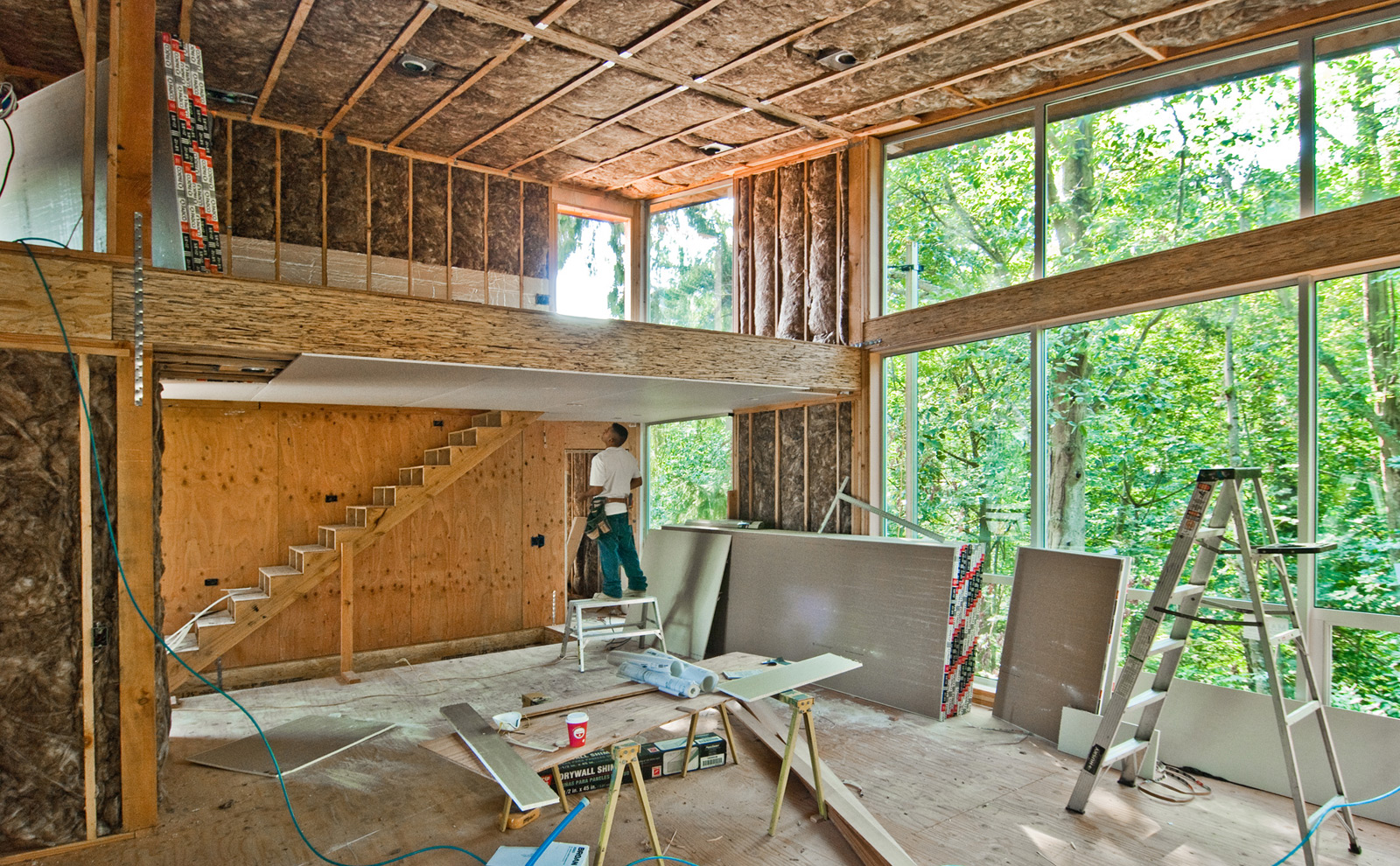
With less than a day left of summer proper, and a couple months worth of blog posts since the last update on the Case Study House, it’s time to bring some of the buzzing activity going on at the site to the surface. The project is at the point where every day there’s something new going in or going up. A couple weeks ago, we shot cover photos of the CSH and since then, building paper, insulation, and the elevated terrace have been installed.

Walls
The interior walls are framed and insulated. Sheet rock is getting installed as of this week, and the interior spaces are taking shape. It’s an interesting point on any project when the drywall goes up, as the interior framing that had been largely transparent is covered. But this is the point where the huge walls of glass become more prominent by opening the interior up to the light, view and woodland forest beyond.
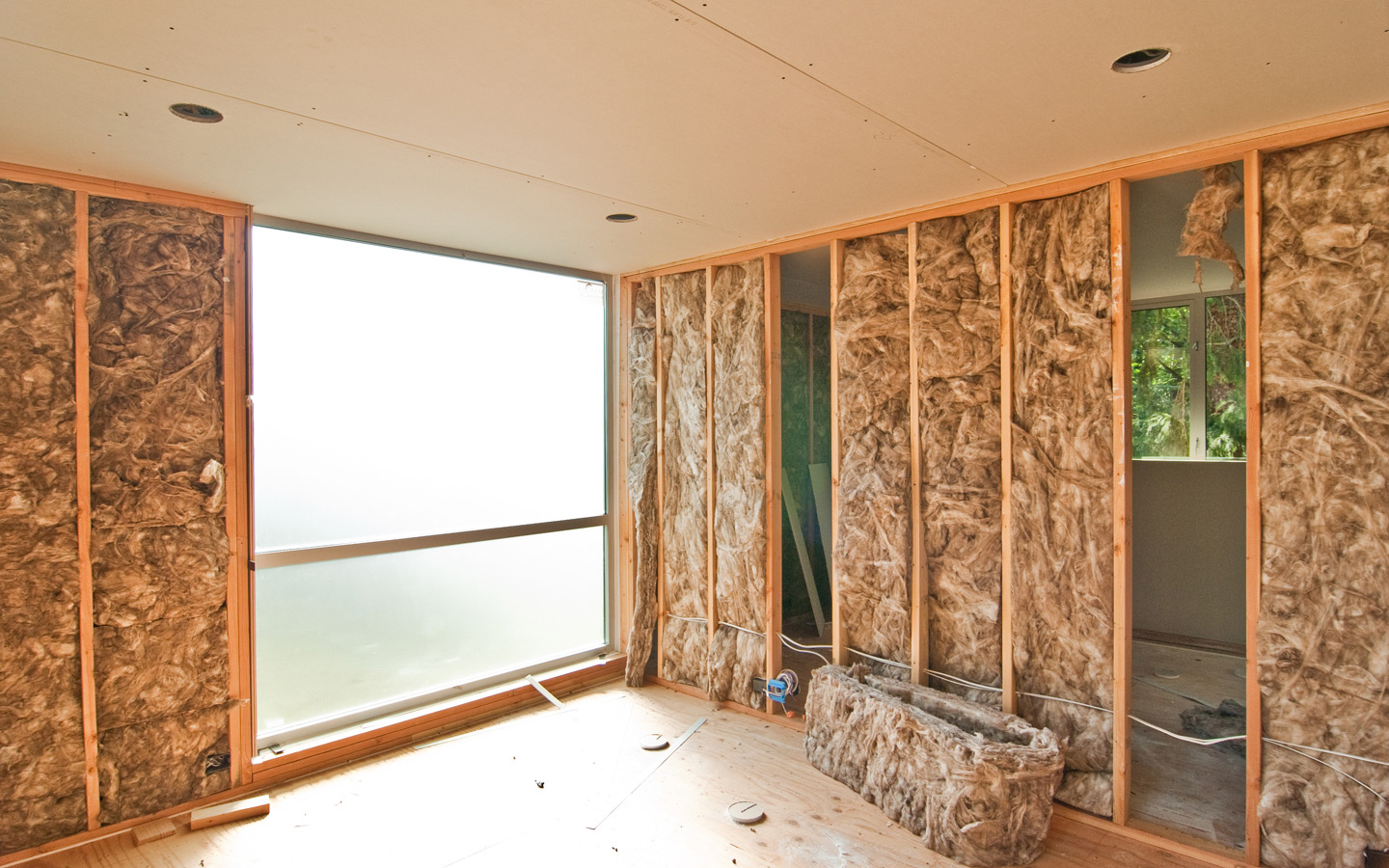
Stairs
For the CSH, we opted to go with a stair concept similar to the Queen Anne Residence completed earlier this year. The clean aesthetic and added openness make the best use of an efficient square footage. The custom-fabricated, cold-rolled, stair guardrail, although a backdrop to the lofted living area, will become an understated focal point of this common area.
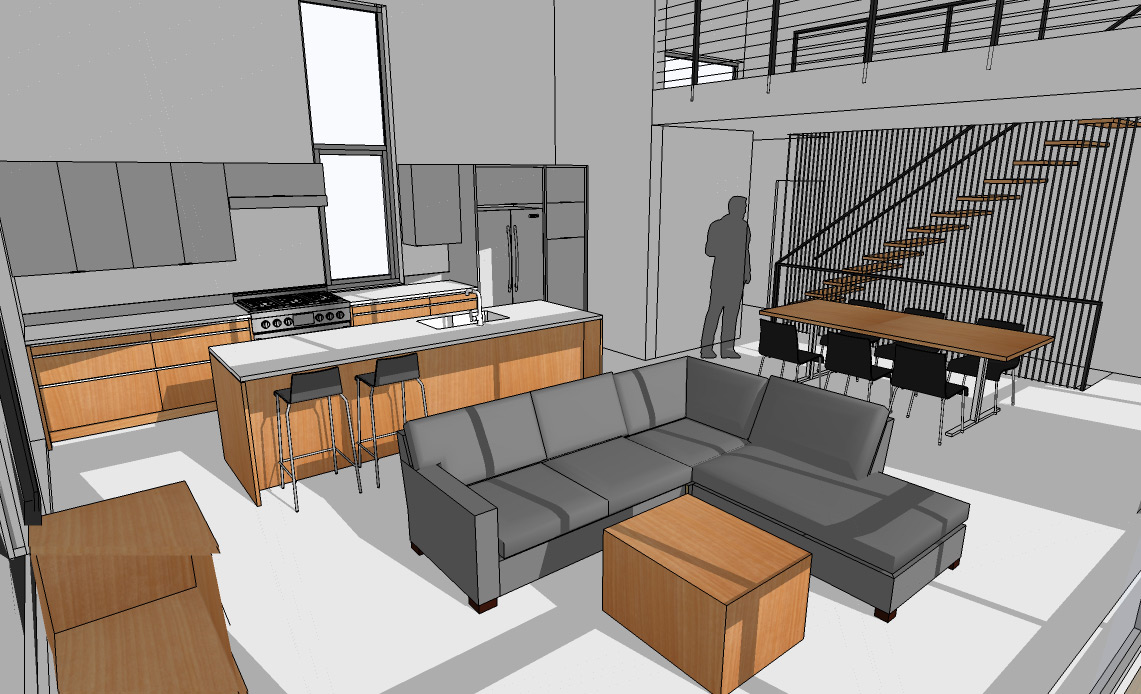
Guardrails
While on site, we got a chance to grab some close-ups of Bart’s assistant, steelworker Skyler, cutting the steel for the guardrails and handrails. These rails are for the interior mezzanine level overlooking the main living space.

Roof
One of the major noticeable adaptations from our original renderings was the decision to move away from the radiused roof. Ensuring proper roof drainage at the turn from roof to wall, ultimately prevailed over the curved profile (which we suspect may have ended up dating the structure anyway). However, the roof-to-wall concept was maintained, and out of our detail studies, we developed concealed gutter details to address the watershed off the roof while maintaining the visual clarity of the profile. We decided on option 1 below which uses a thickened rainscreen to contain the gutter. We like this detail as it provides a second line of defense to the constant exposure of water here in the Pacific Northwest, all while maintaining our thorough and rigorous design approach of making the complex appear simple. Most important, the approach will provide a waterproof system that meets our stringent standards for durability and timelessness.
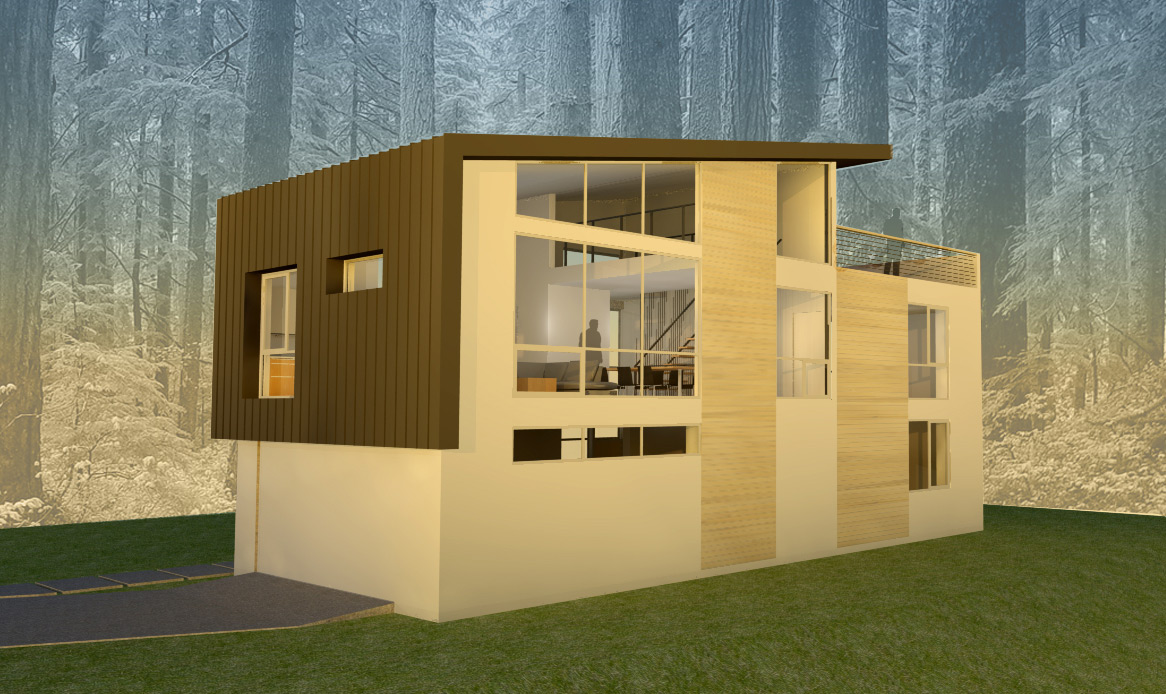
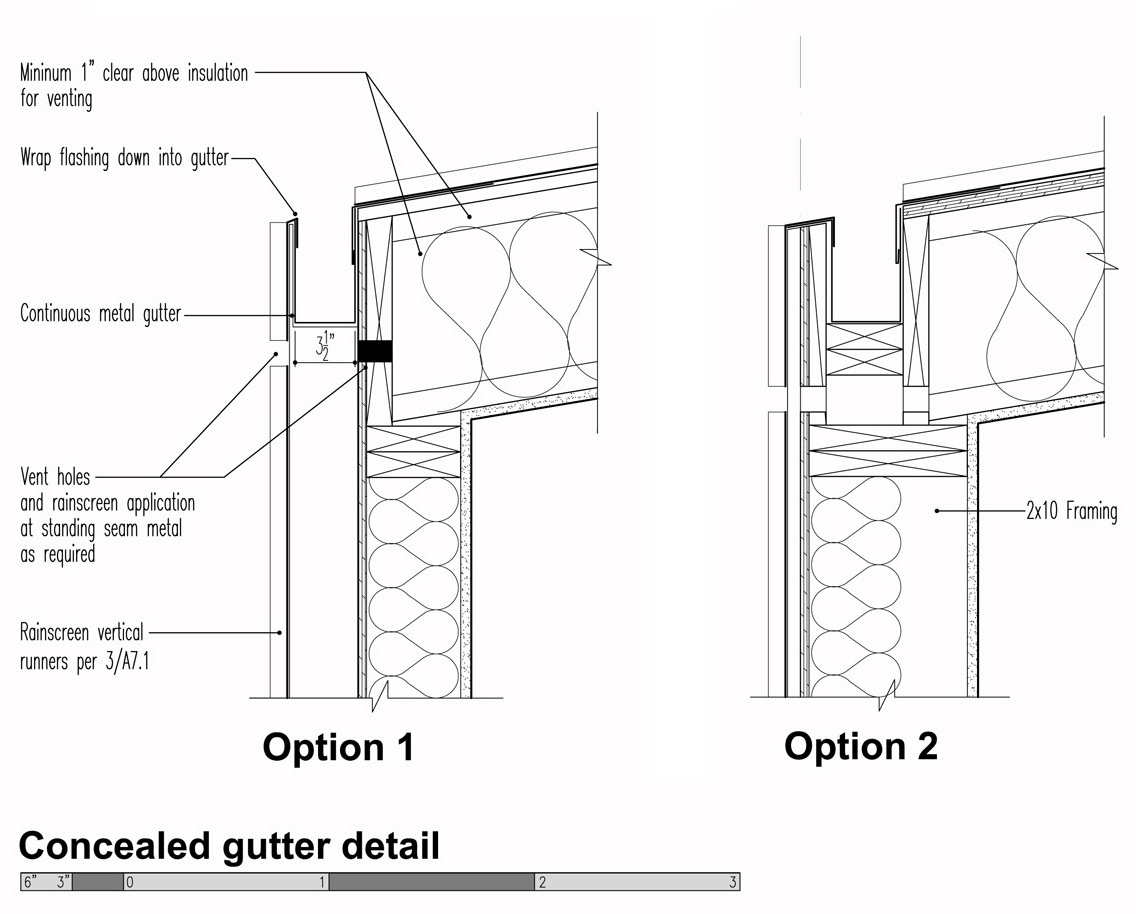
Siding
We chose to hold the standing seam roof-to-siding concept above the ground, aligning it with the head of the garage door instead. The other exterior rainscreen walls have there weather barrier system installed and the skin is currently going up. The siding in these locations will consist of clear 1×4 cedar with infill panels of cement board. Though we often go with a tongue-and-groove with the cedar siding, our chosen rainscreen application requires a skin that can breathe. The cedar 1x4s won’t have a reveal at first (or a barely noticeable one), but over time as the material conditions to its surroundings, the gap will widen, allowing both the movement of air as well as a sharp aesthetic. This is one example of embracing the weathering of the building, and getting out in front of that aging.
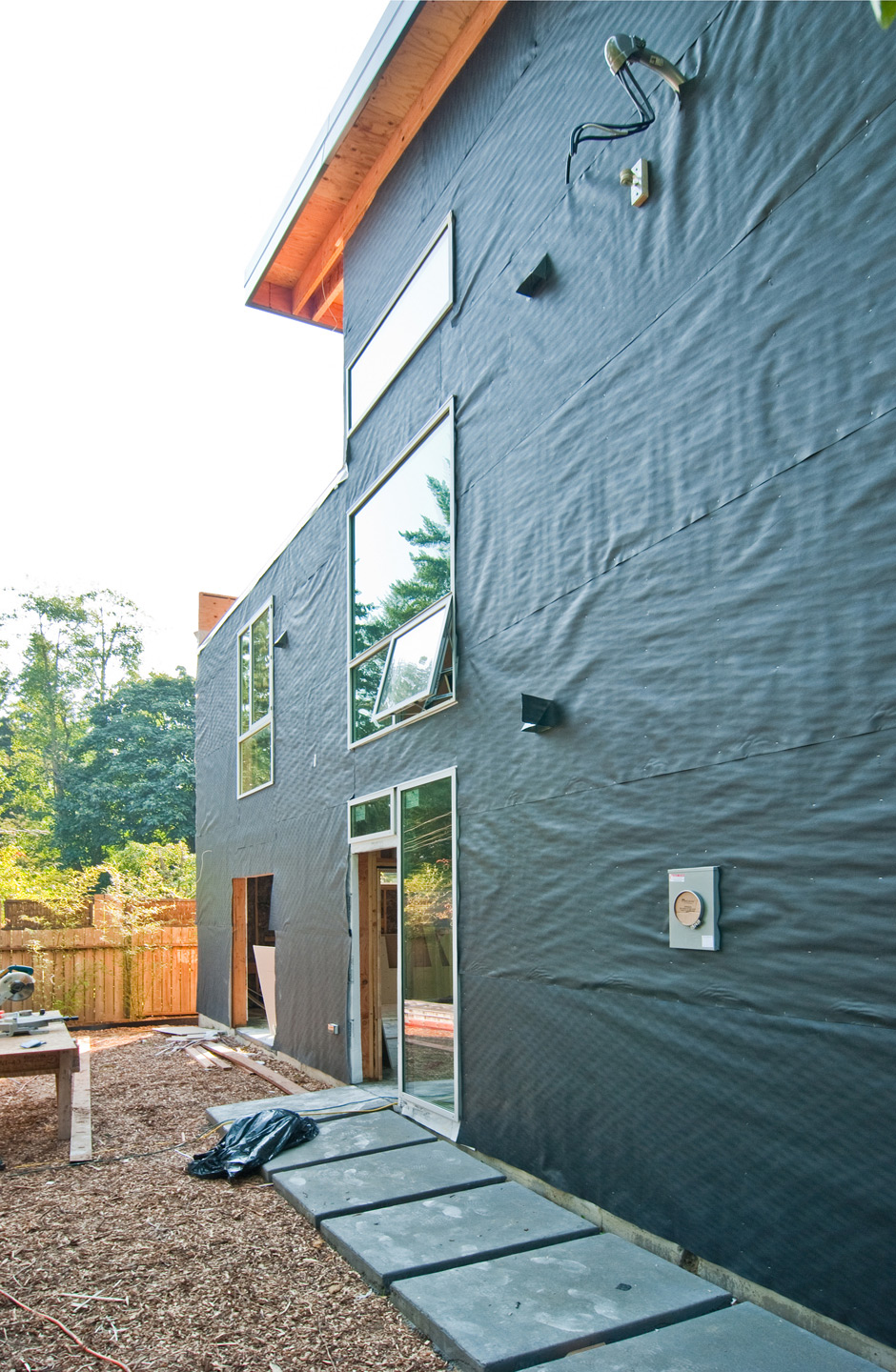
Deck
The terrace finish is installed and it’s looking great. The views from the deck are also tough to beat — (on a clear day) Mt. Baker to the north, and a wooded ravine to the south, all while providing a private perch in the trees. Constructed of ipe decking, the boards were pre-drilled and screwed into sleepers which sit on top of the roof membrane and framing – this method has proven to be the most stable as the ipe silvers and weathers over time.

The Case Study House has been a continuous refinement process (and not quite over yet). Ideas generated in the design stage, as with any project, have evolved to fit within the realities of physics, budget, and the regulations of the local jurisdiction. While we chose not to execute every slick design move we had in mind at the start, the intent has always been to see what we could accomplish within the specific and unique parameters of this site. So far, so good.

For more photos and behind the scenes happenings, check our Facebook page.
For the play by play, jump on our twitter feed.
Cheers from Team BUILD





